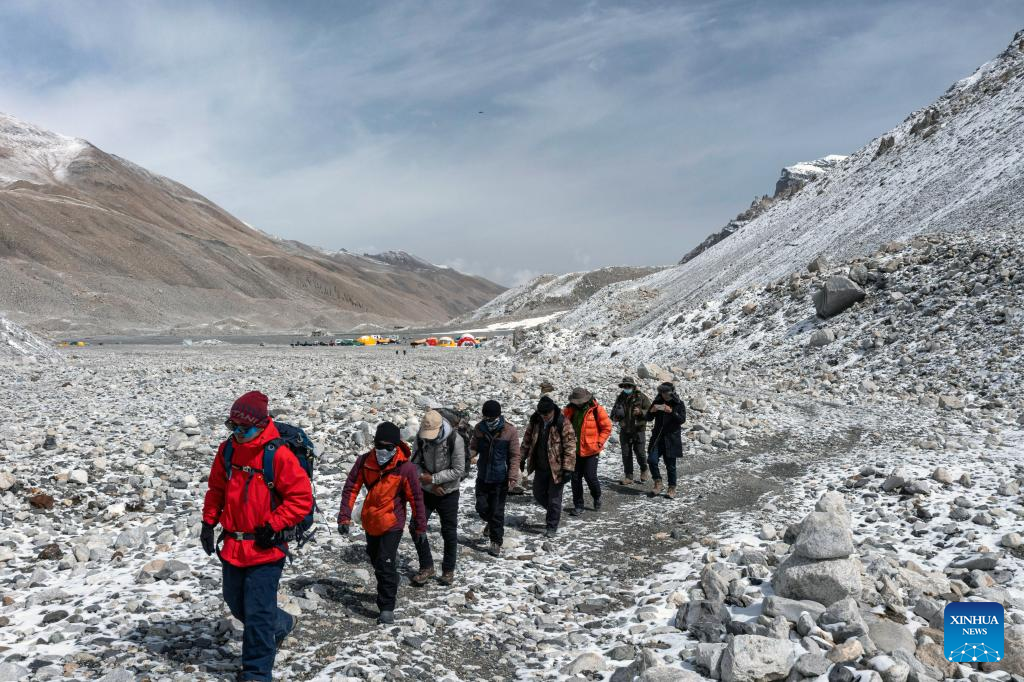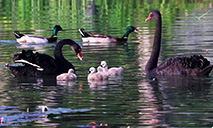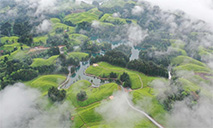Qomolangma expedition explores ultra-high altitude health issues


Aerial photo taken on May 1, 2022 shows members of a scientific research team marching towards East Rongbuk glacier on Mount Qomolangma.
China has started a new comprehensive scientific expedition on Mount Qomolangma, the world's highest peak on the China-Nepal border.
The expedition focuses on major scientific issues such as westerly wind-monsoon synergy, Asian water-tower change, ecosystems and biodiversity, and human activities in the Mount Qomolangma area.
The expedition team will also conduct studies on environmental changes, changes in greenhouse gas concentration, ecosystem carbon sink functions, and human adaptation to extreme environments in extremely high altitude areas of the Mount Qomolangma against the backdrop of global warming, according to the research team. (Xinhua/Sun Fei)
LHASA, May 2 (Xinhua) -- What impact does an ultra-high altitude environment have on human health? What are the hazards for human bodies if they encounter environmental pollution at such high altitudes? What should people do to protect their health in a high-altitude environment?
Chinese researchers on the ongoing comprehensive scientific expedition on Mount Qomolangma, the world's highest peak located on the China-Nepal border, are trying to find answers to these questions. With its peak at 8,848.86 meters, the famous mountain provides an excellent opportunity for such studies.
A team of 27 researchers is monitoring the health condition of 50 volunteers positioned at varying altitudes: 5,200 meters, 5,800 meters, 6,350 meters and 8,848 meters.
Wearing sensors for saturation and electrocardiogram monitoring, Zhu Tong, leader of the squad, is himself one of the volunteers.
Carrying a backpack and holding a hiking stick, Zhu, head of the College of Environmental Sciences and Engineering (CESE) of Peking University (PKU), has been trekking back and forth near the Mount Qomolangma mountaineering base camp, situated at 5,200 meters above sea level.
"Some of my team members have arrived at the 6,350-meter-high area. I'm training myself so that I can meet them there," said Zhu, 59. "As you rise in altitude, your body will change accordingly, which makes this intuitive data valuable."
Researchers will collect blood, urine, saliva, feces and other samples, measure blood pressure, and monitor the pulse wave velocity of the volunteers, including Zhu, to provide samples for the follow-up research.
Through long-term monitoring, Zhu's team has found that the Qomolangma area has a high density of ozone, almost at the same level as in some Chinese cities. Studies have speculated that such ozone pollution is caused by the high concentration of ozone-rich air in the upper atmosphere brought down by glacial winds on ice-cold Mount Qomolangma.
Hua Qiaoyi, a member of the squad and doctor from the CESE, said that even a low concentration of ozone -- a strong oxidizing pollutant -- harms human health, having the potential to stir and damage the respiratory tract and the cardiovascular system.
"The expedition is a rare opportunity for our team to understand the harmful effects of high pollution levels on the body in ultra-high altitude and oxygen-deficient environments," Hua said.
The research takes time as the data is still being collected and sorted. Zhu said they will eventually have a lot of "interesting results," which may help provide preventive and protective measures for the health of people living and working at high altitudes, as well as short-term visitors.
Zhu's squad is part of the scientific research team consisting of more than 270 members in the comprehensive scientific expedition on Mount Qomolangma, which falls within China's second scientific research survey on the Qinghai-Tibet Plateau.
With the most disciplines covered, the most scientific research participants, and the most advanced equipment utilized, the expedition is the largest since the survey on the Qinghai-Tibet Plateau started in 2017.
Photos
Related Stories
Copyright © 2022 People's Daily Online. All Rights Reserved.










